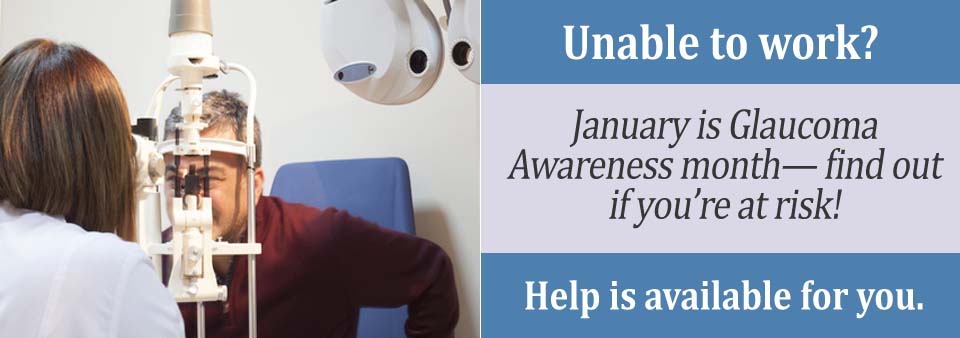Glaucoma is the leading cause of blindness in the United States. Approximately 120,000 Americans are legally blind because of their glaucoma, while another 3.9 million have limited vision. However, according to the Glaucoma Research Foundation, approximately half of people with glaucoma are unaware that they even have the disease.
January is Glaucoma Awareness Month, a time for people to become educated on the disorder and the struggles associated with it. With further education, those with glaucoma may be able to receive help before their symptoms worsen.
What is Glaucoma?
Glaucoma is a condition that causes irreparable damage to the eyes’ optic nerves. This is due to a build-up of liquid which puts pressure on the eye, continuously damaging the optic nerve until the eye can no longer process visual information.
There are two types of glaucoma: open-angle glaucoma and angle-closure glaucoma. In open-angle glaucoma, the most common type, the eye has a normal drain structure with improper fluid drainage. This leads to increased eye pressure and, if untreated, eventual blindness. The other type, angle-closure glaucoma (also known as “acute glaucoma”), is less common.
This form is caused because the angle of the drainage system in the eye is too narrow, causing fluid to leak into multiple areas of the eye. This can lead to other disorders such as cataracts, which causes clouding of the eye lenses and blindness.

Warning Signs and Prevention
While there is currently no cure for glaucoma, early diagnosis can prevent it from getting severe. Warning signs of potential glaucoma development include:
- vision loss
- continued redness or “bloodshot” eyes
- seeing halos or fuzziness around lights
- consistent eye pressure or eye pain
- nausea or vomiting associated with eye pressure or strong headaches
- narrowed or tunnel vision
- black spots in the vision
- eyes that appear hazy (especially in infants and young children)
If any of these symptoms are present, it is important to see a doctor immediately. To diagnose glaucoma, an eye doctor can open (or “dilate”) your pupils to examine your optic nerve, do a tonometry test to examine eye pressure, and/or do a general visual field test.
Especially for those with a family history of glaucoma, it is important to make regular appointments with your doctor and live a healthy life style. The root cause of glaucoma is still unknown, but things like a healthy diet, regular exercise, and abstaining from smoking can also make a big difference when preventing illnesses of any kind.
Coping with Glaucoma
Glaucoma is by no means a life-threatening diagnosis. However, it can require accommodations that hinder one’s ability to live life as they used to. For example, some may be prescribed daily eye drops to help fluid drainage, while others require laser surgery or microsurgery.
Medications can also cause side effects like redness, swelling, headaches, or discomfort which make it hard to focus and frustrating to live with.
For those living with glaucoma, it is important to stay on top of your diagnosis, seek assistance from family and friends, and remain as positive as possible in the face of your diagnosis.
While glaucoma can be scary, treatment is better today than it has ever been, and many glaucoma patients live a happy, independent life in spite of their disorder.
Additional Help
If you've been diagnosed with glaucoma or if a loved one is dealing with this condition, there is assistance available to help cope with the challenges that people with glaucoma can face. Applying for Social Security disability insurance (SSDI) benefits may be an option.
These benefits can help cover the cost of treating your glaucoma and help replace any income that may have been lost due to this condition.
Add new comment